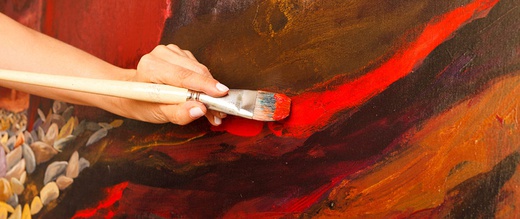The views expressed in our content reflect individual perspectives and do not represent the authoritative views of the Baha'i Faith.
“That isn’t real music!” exclaimed my banjo-player friend when I put needle to platter to listen to a favorite vinyl album.
“That’s bad poetry,” complained a literature professor following the screening of excerpts from PBS’ The United States of Poetry during an artists’ retreat.
An acquaintance of mine confided that his peers pronounced that his work doesn’t qualify as “fine art.”
I even once had a fellow member of an arts task force exclaim “I hate your poetry!”
An article on the well-known sculptor Seward Johnson in the March 30 edition of American Profile showed that even he suffered these kinds of demeaning comments. Art critics denigrated his popular series, “Celebrating the Familiar,” as “kitschy and unoriginal.”
Why do we judge art so harshly? Baha’u’llah wrote:
Arts, crafts and sciences uplift the world of being, and are conducive to its exaltation. Knowledge is as wings to man’s life, and a ladder for his ascent. Its acquisition is incumbent upon everyone. – Tablets of Baha’u’llah, p. 51.
He also advised that craftsmen should be treated “with deference.” What a contrast!
In discussing what I believe to be the injustice of these kinds of remarks with a professional artist and critic, he insisted “After all my years of education, training—and degrees—I’ve earned the right to make those judgments.”
 But has he? Well, yes and no. From a technical point of view, a critic might note weaknesses and strengths—and offer constructive criticism. But to harshly dismiss something, to declare it “bad art,” diminishes the very essence of the effort and the individual who created it. Samuel Butler said, “Every man’s work, whether it be literature or music or pictures or architecture or anything else, is always a portrait of himself.”
But has he? Well, yes and no. From a technical point of view, a critic might note weaknesses and strengths—and offer constructive criticism. But to harshly dismiss something, to declare it “bad art,” diminishes the very essence of the effort and the individual who created it. Samuel Butler said, “Every man’s work, whether it be literature or music or pictures or architecture or anything else, is always a portrait of himself.”
Regardless of the level of competence, whether novice, amateur, highly accomplished, or master level, each artistic creation has some value; each artistic offering is drawn from the well of the spirit of its maker. To trample that spirit might sever the line holding the bucket that dips into the well. If the person quits, they’ll never have the chance to improve; future possibilities will simply vanish unless one has enough pluck and a thick enough skin to find their way back.
An acquaintance of mine did find her way back from such harsh criticism, but it took many years and a sad circumstance. She’s a talented costume designer, an accomplished painter and has merited one-woman shows in various galleries. Told by her high school art teacher, “Forget about art; you have no talent for it,” she didn’t pick up a paintbrush again until she underwent a severe personal crisis many years later. In need of an outlet for her distress, she bought some supplies and attacked the canvases with her brushes, painting away her pain. When her mind cleared, she realized that the quality of her work went beyond emotional catharsis.
Experts have a right to recognize when something is poorly done, but they also have an obligation to word their critiques tactfully. They, more than the average person without an artistic education, should know the dangers of harsh criticism.
James Playstead Wood, author of Emily Dickenson, A Portrait, wrote “Critics may set up standards for the forms of poetry, decide what subjects are and are not suitable for poetic treatment, and lay down laws about language and style—they have done it since Aristotle, but they seldom satisfy anyone but themselves and other critics.”
In his Sonnet #66, Shakespeare laments “Art made tongue-tied by authority.”
Rudyard Kipling intimated a deeper, more sinister view of unfair criticism: “And the first rude sketch that the world had seen was joy to his mighty heart / Till the Devil whispered behind the leaves “It’s pretty, but is it art?”
Abdu’l-Baha emphasized a culture of encouragement. If every critic followed his advice, we might have more artists endeavoring to make art. For instance, he said:
If a pupil is told that his intelligence is less than his fellow pupils, it is a very great drawback and handicap to his progress. He must be encouraged to advance by the statement, ’You are most capable, and if you endeavor, you will attain the highest degree.’” – The Promulgation of Universal Peace, p. 76.
The Baha’i painter Mark Tobey anticipated a less critical future: “If I do anything important in painting some age will bring it forth and understand. One naturally looks forward to the time when absolutes will reign no more and all art will be seen as valid.”

















Comments
Sign in or create an account
Continue with Facebookor